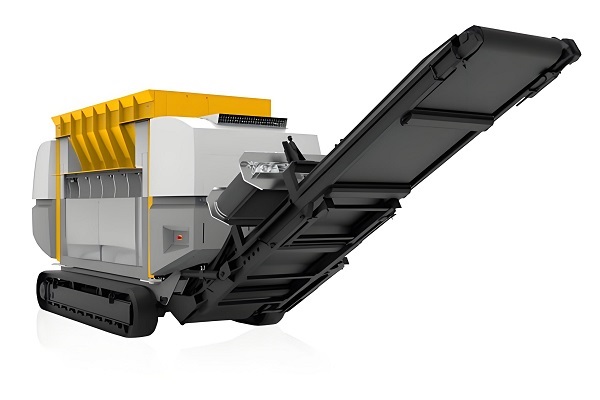
The ZMS series shredder is a mobile solid waste processing machine that integrates feeding, shredding, conveying and separation. It can be used to process a wide range of waste such as municipal domestic waste, commercial & industrial waste and is suitable for using in waste transfer stations, landfills, composting and recycling stations. Depending on the application, the mobile shredder can be equipped with different types of shredder, sorting machine or cutters components to ensure that the final disposal.
The ZMS series shredder is a mobile solid waste processing machine that integrates feeding, shredding, conveying and separation. It can be used to process a wide range of solid waste such as municipal domestic waste, commercial and industrial waste, bulky waste and is suitable for using in waste transfer stations, landfills, composting and recycling stations. Depending on the application, the ZMS mobile shredder can be equipped with different types of shredder, sorting equipment or cutters components to ensure that the final disposal requirements are met.
The ZMS series mobile shredders are ideal for the disposal of scattered waste in urban and suburban areas. Its design concept fully considers the crushing needs of various different materials, eliminating the impact of crushing site, environment, foundation, disposal volume, electricity and other factors on production, providing customers with mobile and simple, efficient and stable crushing equipment with low operating costs. ZMS series mobile solid waste crushing plant with built-in diesel engine can produce without external power supply; comes with a mobile chassis, easy and fast mobile transfer; overall hydraulic drive, efficient and stable operation. The ZMS series mobile shredder can be used to process all types of solid waste on site and is also suitable for waste disposal service companies.
The mobile shredder can be equipped with different types of primary, medium and fine shredding equipment according to the user's needs, and is equipped with conveying and magnetic separation equipment, which can operate independently or in combination with other equipment to form a production line. When the mobile shredder is in operation, the shredder places the material inside for shearing and shredding, and the shredded material is sorted by the magnetic separator and output by the discharge conveyor.
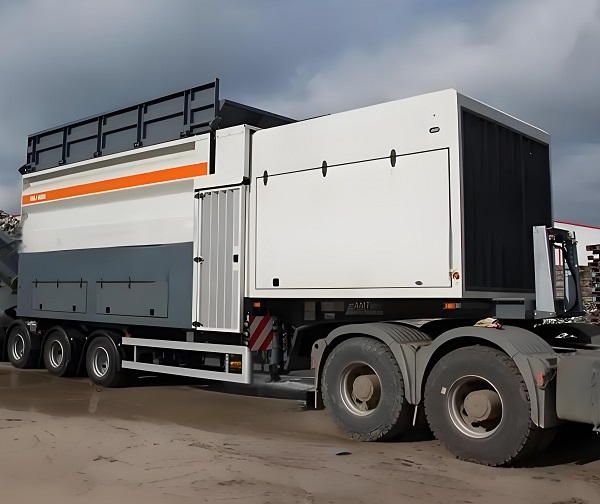
When choosing a mobile shredder, multiple factors need to be considered to ensure that the selected equipment can meet your specific needs. Here are some key steps and suggestions for choosing a mobile shredder:
1. Clearly define the type and characteristics of materials, as different materials have different hardness, toughness, humidity, and other properties that directly affect the selection of shredders. For materials with higher hardness, it is necessary to choose a shredder with stronger crushing ability. For materials with high humidity, it is necessary to choose a shredder that can cope with humid environments.
2. Processing size refers to the range of material sizes that the shredder can handle. Select the appropriate feeding port size and shredding chamber size based on the size of the material.
3. Choose the appropriate shredder configuration based on the particle size requirements of the final product, such as blade spacing, mesh aperture, etc.
4. To evaluate production demand and equipment performance, it is necessary to choose a suitable shredder based on one's own production demand. Production demand refers to the amount of material that needs to be processed per unit of time, which directly affects the selection and configuration of shredders.
5. Check the performance parameters of the equipment, such as maximum feed size, processing capacity, power consumption, etc. Consider the durability and maintenance costs of the equipment.
Different types of pre, medium and fine shredding equipment can be flexibly configured according to customer needs, and feeding, conveying, and magnetic separation equipment.
Integrating mobile chassis, diesel engine, feeding, crushing, conveying, magnetic separation and other process equipment, it has a compact structure and a small footprint.
The tire chassis can travel long distances, has a small turning radius, low ground contact ratio, good passability, and can adapt to complex geographical environments.
It can easily move to different work locations, especially suitable for application scenarios that require frequent changes in job positions. No specialized infrastructure is required, reducing installation time and costs.
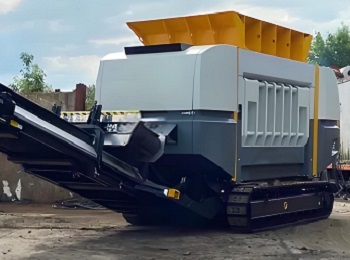
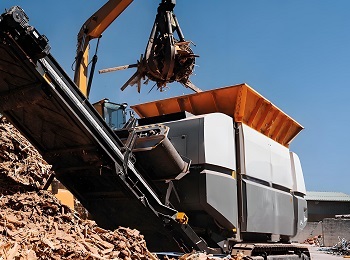
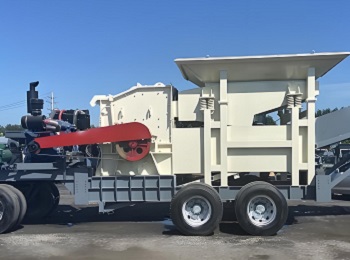
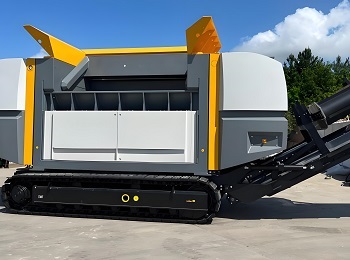
Mobile shredder is a movable crushing equipment mainly used for on-site crushing of various materials, such as construction waste, wood, plastic, rubber tires, etc. The following is the basic working principle of a mobile shredder:
1. Startup phase: The motor of the mobile shredder is started, and the winding inside the motor generates a rotating magnetic field after being energized. It interacts with the magnetic field generated by the permanent magnet or other windings in the motor, generating electromagnetic force to rotate the motor.
2. Power transmission: The output shaft of the motor is connected to the main shaft of the shredder through a reducer. The function of the reducer is to reduce the speed and increase the torque, which can effectively improve the ability to shred materials.
3. Material handling: The material enters the shredder box through the feeding system. The box is equipped with a moving knife and a fixed knife. The moving blade is installed on the spindle and rotates under the drive of the motor, producing a shearing effect with the fixed blade. The material is subjected to a comprehensive process of shearing, squeezing, and shearing between the moving blade and the fixed blade, and is torn into smaller fragments.
4. Material discharge: The shredded material is discharged from the discharge port to complete the entire shredding process.
Mobile shredders have been widely used in fields such as construction waste treatment, wood processing, and plastic recycling due to their portability and efficiency. These devices can effectively help reduce material volume, improve recycling efficiency, and also reduce transportation costs.


| Model | Capacity (t/h) | Output size (mm) | Dimension (mm) |
| ZMS9 | 3-20 | 100-300 | 9500×2700×4000 |
| ZMS10 | 5-30 | 10000×2700×4000 | |
| ZMS12 | 8-40 | 12000×2700×4000 |
*The output will vary according to different materials, feed particle size and other factors.
Save Time! Get A Detailed Quotation Quickly.
